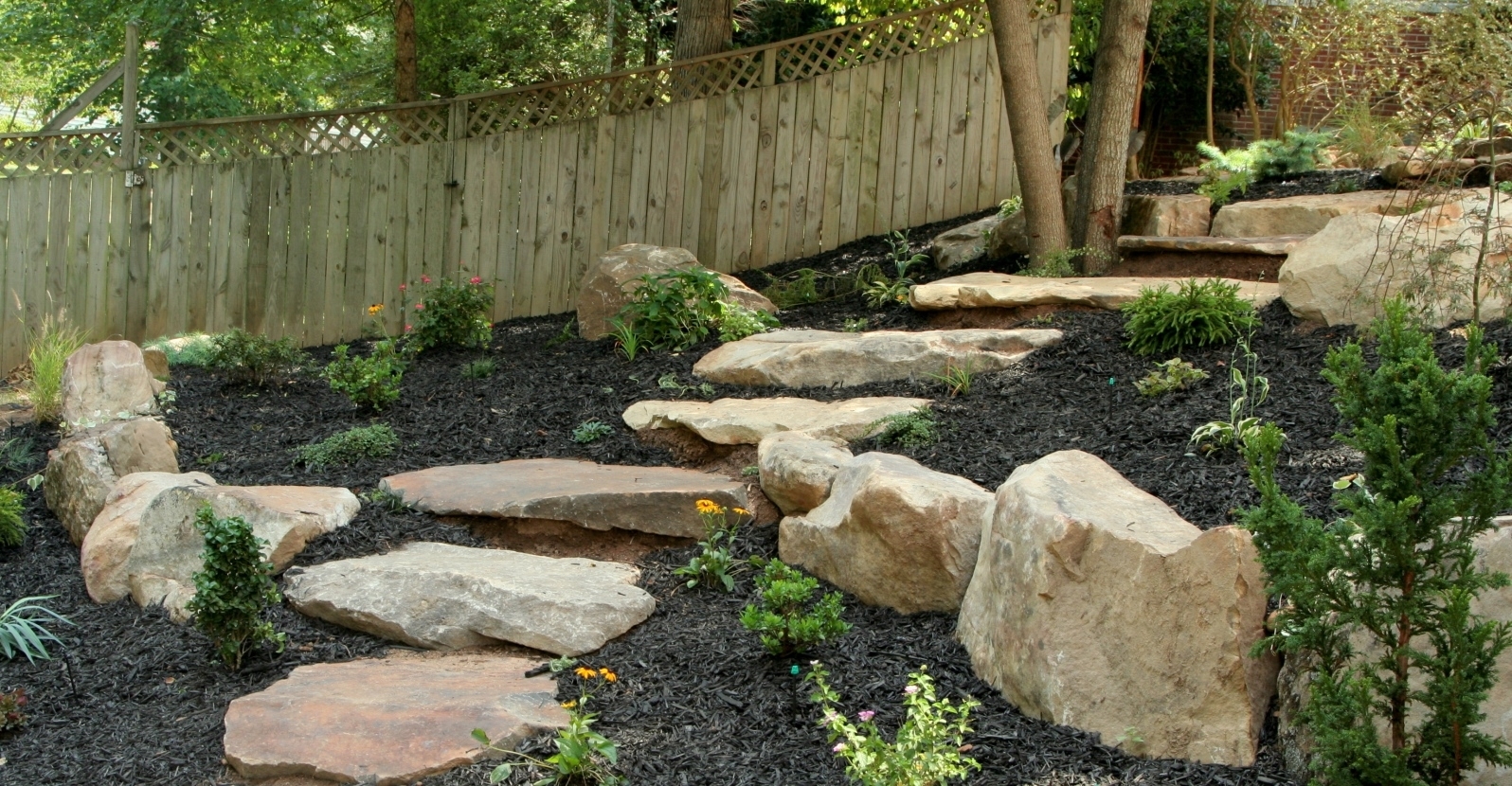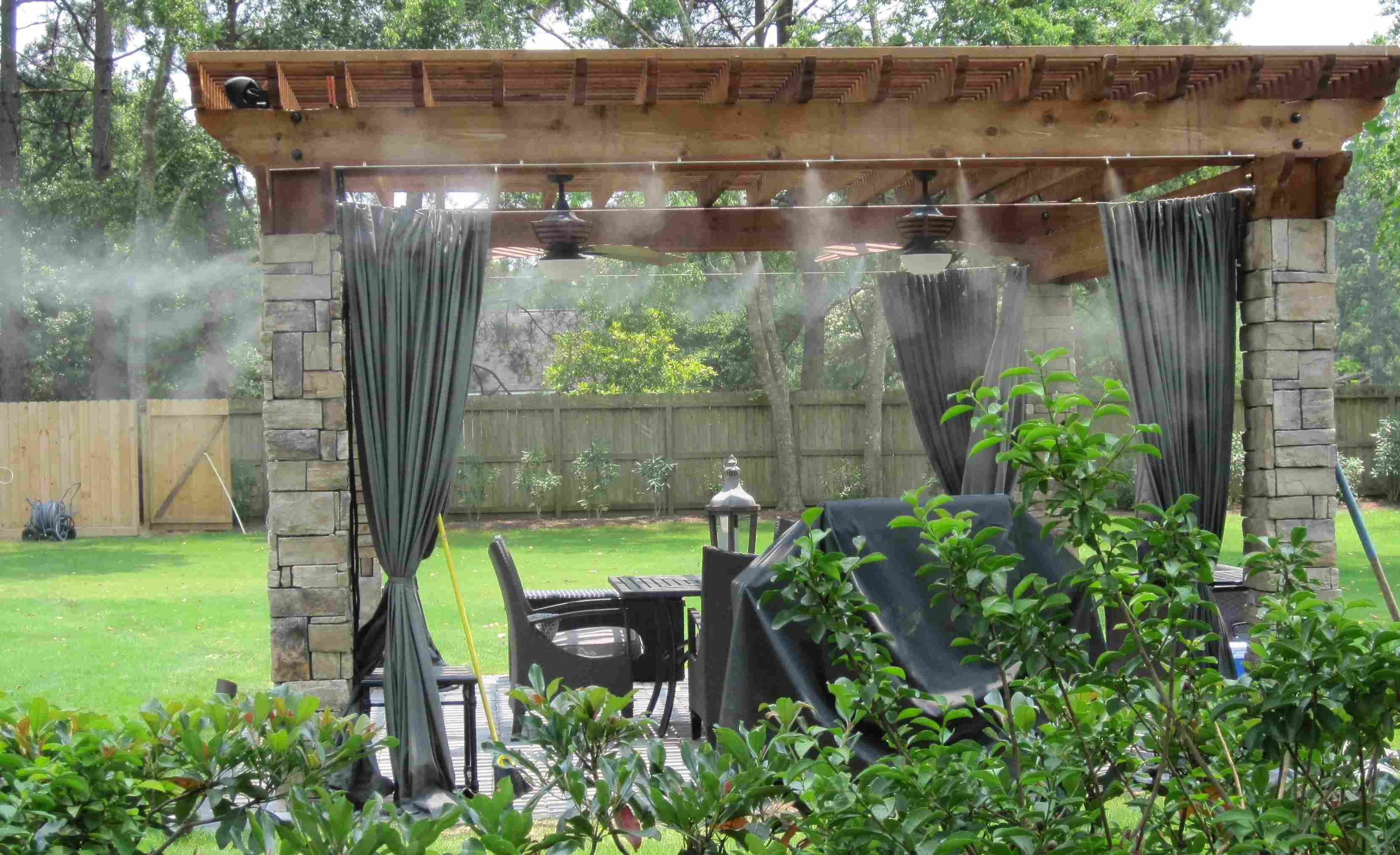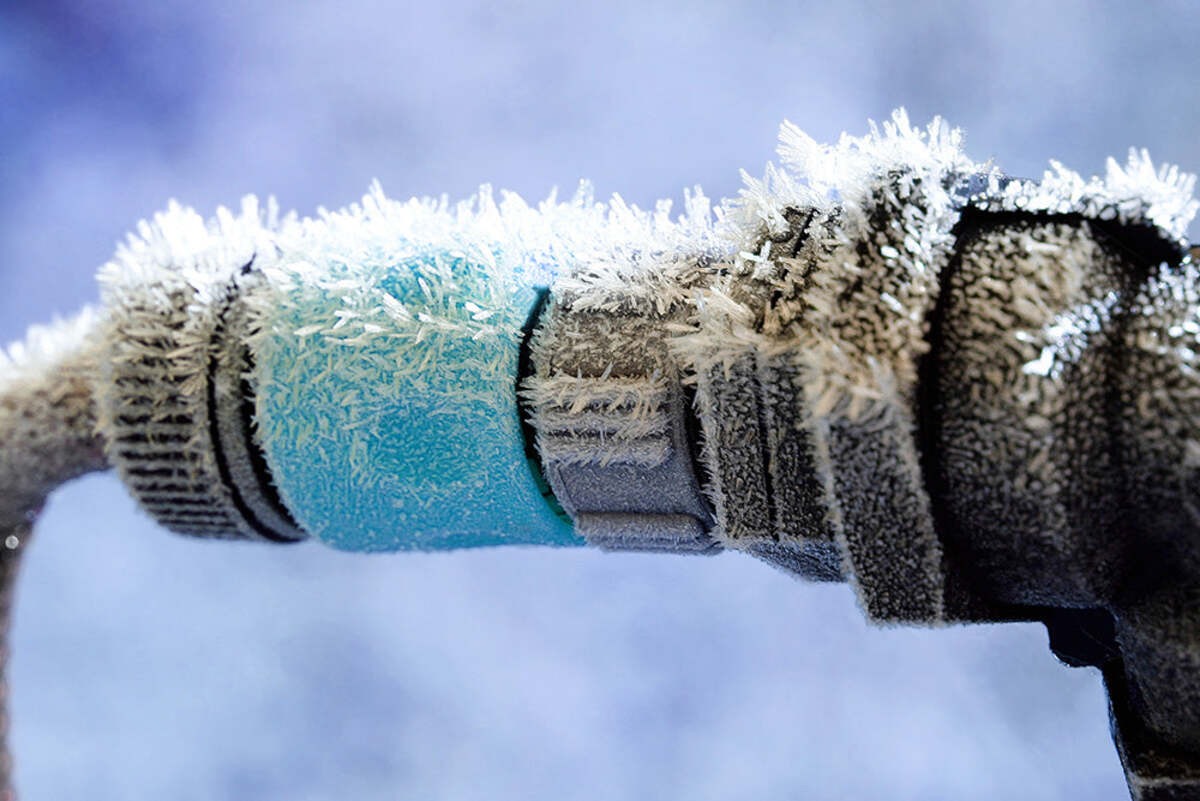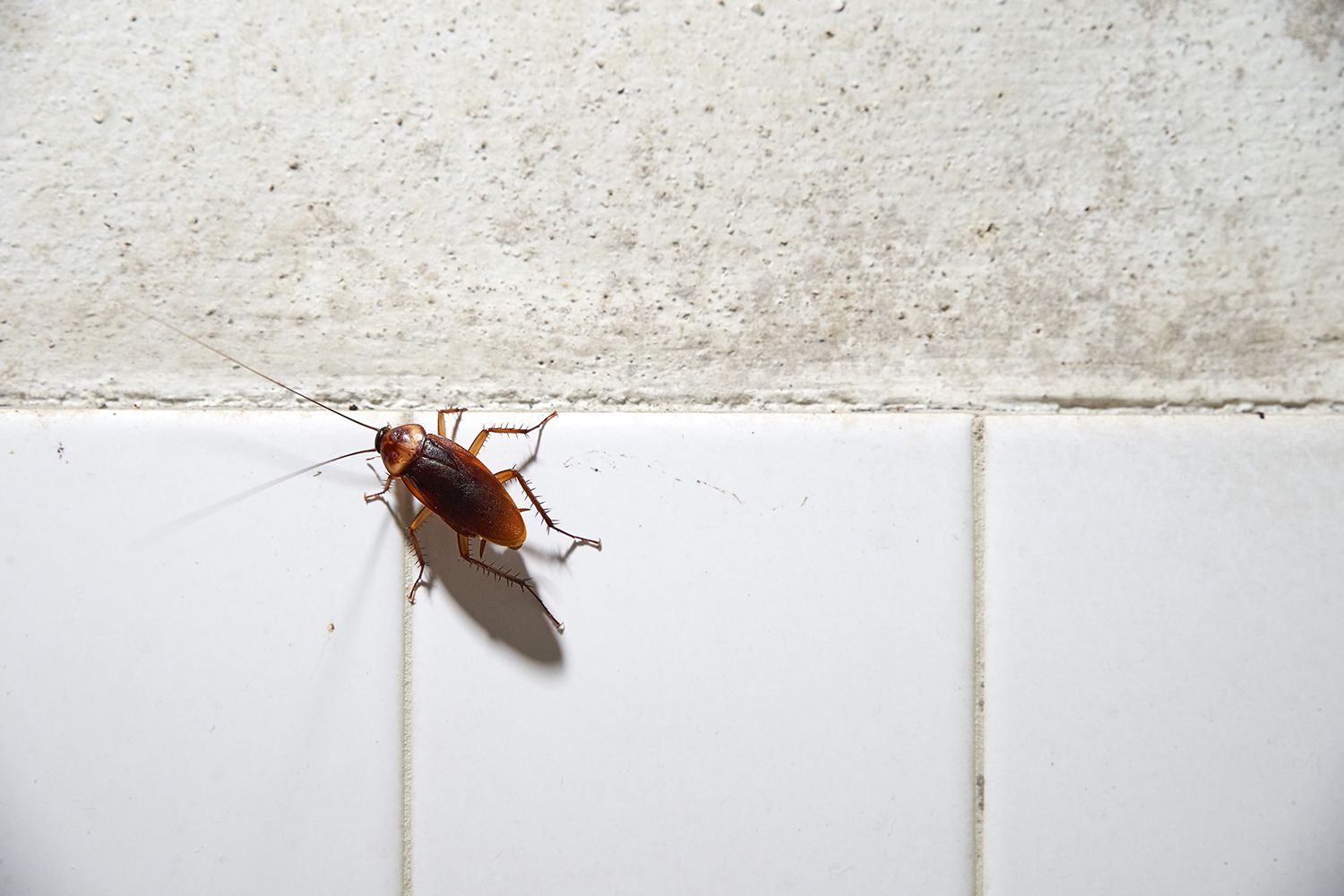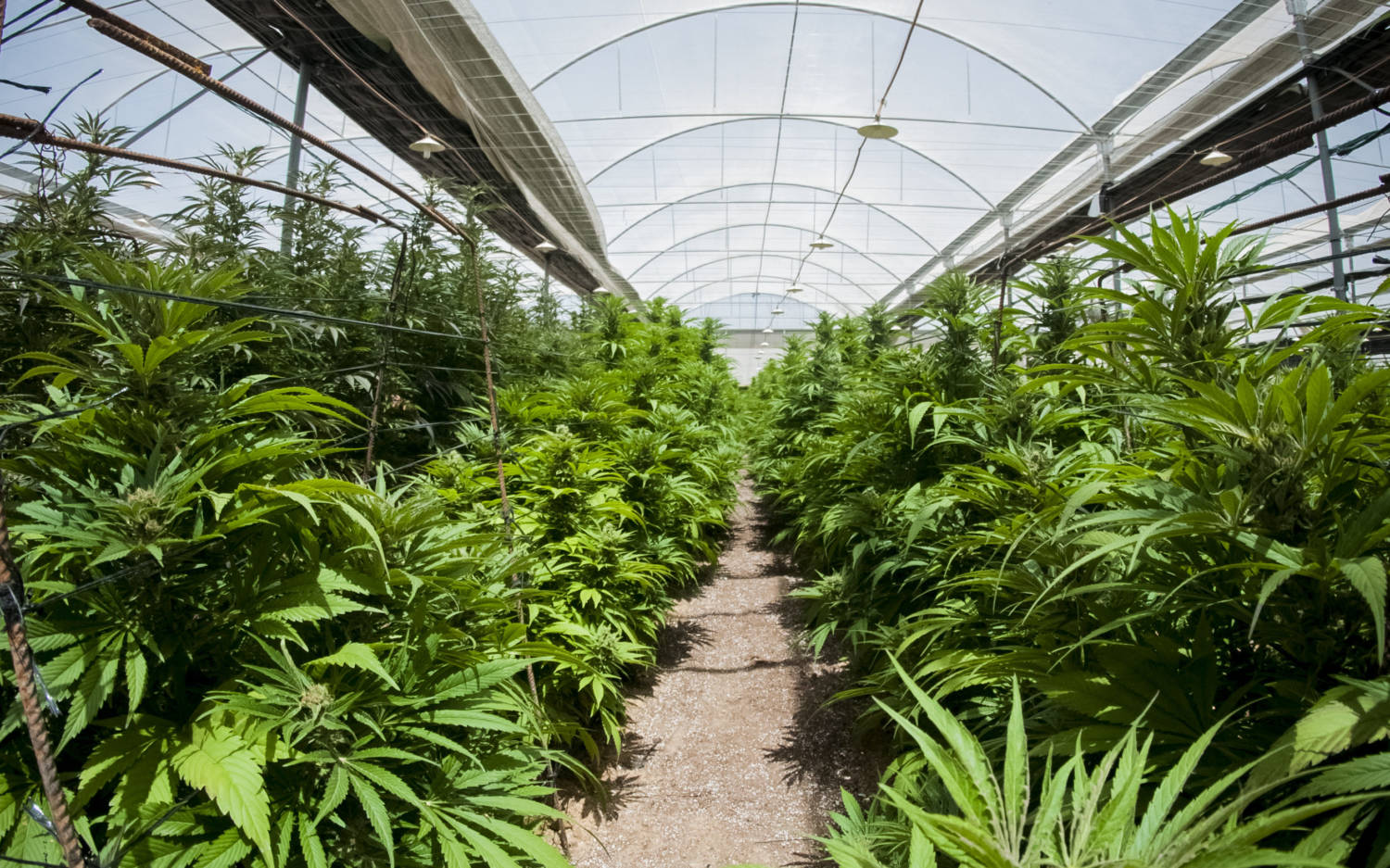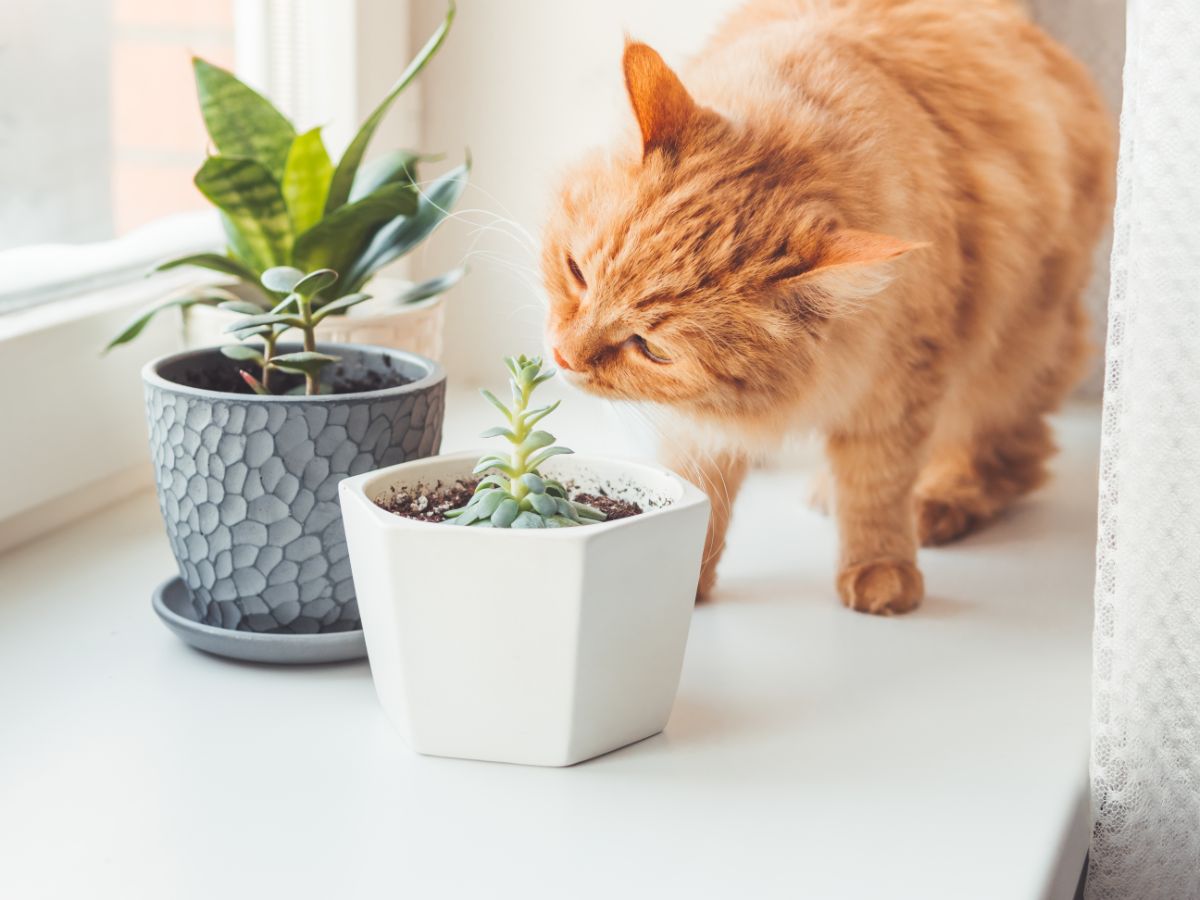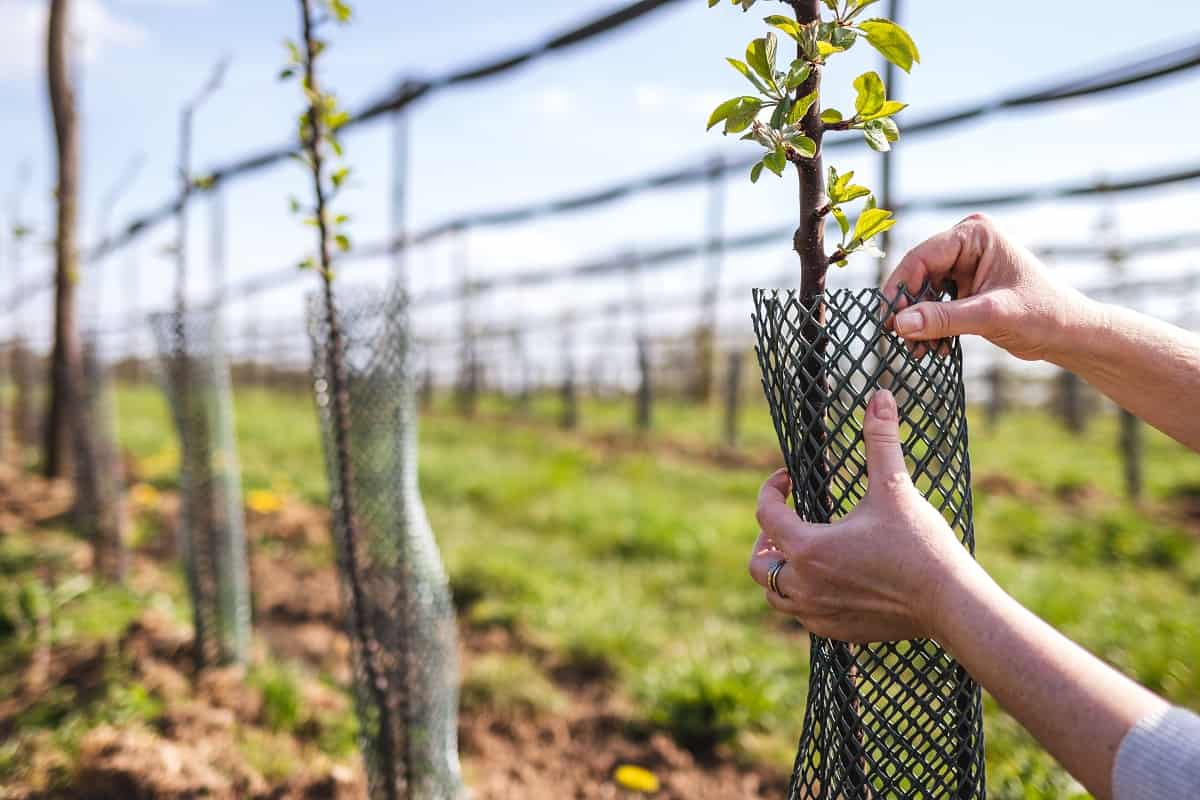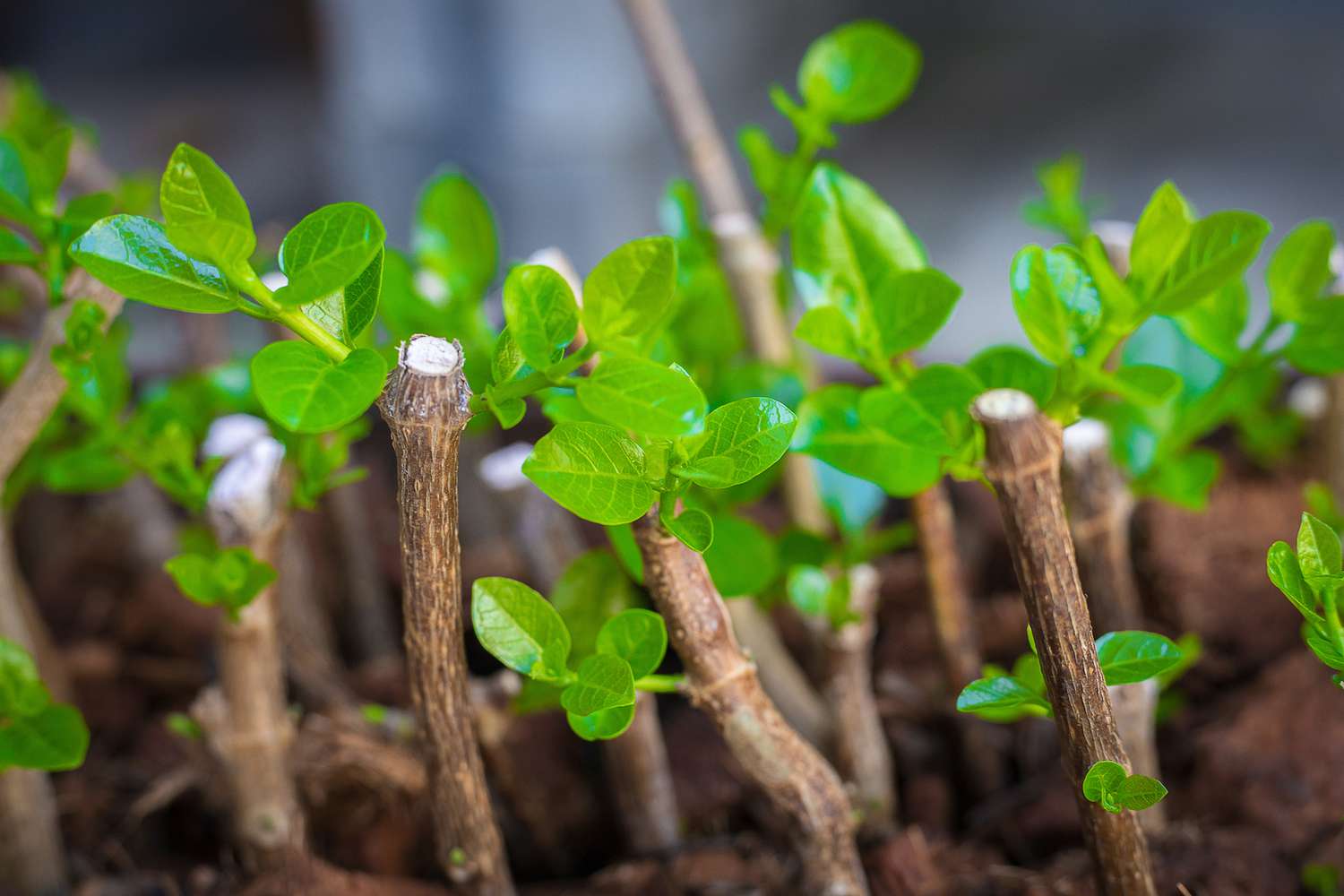Home>Gardening Tips and Tricks>Problem Solving>How To Keep Weeds From Growing In A Flower Bed


Problem Solving
How To Keep Weeds From Growing In A Flower Bed
Modified: January 22, 2024
Learn effective problem solving techniques to prevent weeds from taking over your beautiful flower bed. Say goodbye to pesky weeds with our expert tips and tricks.
(Many of the links in this article redirect to a specific reviewed product. Your purchase of these products through affiliate links helps to generate commission for Chicagolandgardening.com, at no extra cost. Learn more)
Table of Contents
Introduction
Maintaining a beautiful flower bed is a rewarding and satisfying endeavor for any gardener. However, the appearance of unsightly weeds can quickly spoil the aesthetic appeal of your carefully cultivated space. Dealing with weeds can be a frustrating and time-consuming task, but with the right knowledge and strategies, you can keep them at bay and ensure the continued health and beauty of your flower bed.
Weeds are tough and opportunistic plants that have a remarkable ability to thrive in even the most challenging conditions. They compete with your flowers for essential resources like water, sunlight, and nutrients, impeding their growth and robbing them of their beauty.
To effectively combat weeds, it is crucial to understand the underlying causes and implement preventive measures. By carefully choosing the right plants, preparing the flower bed properly, and implementing regular maintenance routines, you can create an environment that discourages weed growth and promotes the vibrancy of your flowers.
In this article, we will explore various techniques and methods to keep weeds from growing in your flower bed. We will discuss the importance of choosing the right plants for your garden and provide guidance on how to prepare the flower bed to create an inhospitable environment for weeds. Furthermore, we will delve into mulching techniques, natural weed control methods, as well as chemical weed control options for more stubborn weed problems.
By following the advice outlined in this article, you can establish a weed-free flower bed that will be the envy of your neighborhood and provide a visually stunning backdrop to your outdoor space. Say goodbye to the relentless battle against weeds and embrace a garden filled with flourishing flowers and minimal maintenance.
Understanding the Problem
To effectively address the issue of weeds in your flower bed, it is essential to have a comprehensive understanding of the problem at hand. Weeds are fast-growing and resilient plants that can quickly overpower and dominate the space meant for your beautiful flowers. By understanding their characteristics and growth habits, you can implement effective strategies to prevent and control their growth.
Weeds are opportunistic plants that can thrive in various conditions, from full sun to shade, and can tolerate a wide range of soil types. They reproduce prolifically, spreading through seeds, underground rhizomes, or by clinging onto animals, clothing, or garden tools. Weeds can also multiply rapidly due to their ability to produce a vast number of seeds, which can remain dormant in the soil for several years, waiting for the right conditions to germinate.
One key factor contributing to weed growth is the availability of open space and bare soil in your flower bed. Weeds take advantage of these areas, utilizing them for their rapid and unhindered growth. They often outcompete your desired plants for sunlight, water, and nutrients, leading to stunted growth and an unsightly appearance.
Understanding the specific types of weeds prevalent in your area is crucial for effective weed management. Each weed species has its unique growth habit, tolerance levels, and preferred environmental conditions. By identifying and understanding these weeds, you can develop targeted strategies to combat their growth.
Establishing a proactive approach to weed prevention is vital. Regularly monitoring your flower bed and taking immediate action when weeds appear can prevent them from establishing a strong foothold. Additionally, practicing good garden hygiene, such as regularly removing debris and fallen leaves, can help eliminate potential weed seed sources.
By understanding the problem of weed growth and implementing preventative measures, you can take control of your flower bed and create an environment that promotes the growth and beauty of your chosen plants.
Choosing the Right Plants
When it comes to keeping weeds at bay in your flower bed, selecting the right plants is a crucial step. By choosing plants that are vigorous, well-adapted to your local climate, and well-spaced, you can discourage weed growth and create a dense and thriving garden.
Opt for plants that have a dense growth habit, such as groundcovers, ornamental grasses, or perennial flowers with ample foliage. These plants will naturally shade the soil, preventing weed seeds from germinating and competing for resources with your desired plants.
It is also essential to choose plants that are well-suited to the specific conditions of your flower bed. Consider factors such as sunlight exposure, soil type, and moisture requirements. By selecting plants that are well-adapted to these conditions, you create an environment where your desired plants can flourish while making it more challenging for weeds to establish themselves.
When spacing your plants, be sure to follow the recommended guidelines provided by gardening experts or plant labels. Proper spacing allows plants to grow and fill the available space, leaving less room for weeds to emerge. Additionally, avoid overcrowding your flower bed, as this can create shade and moisture retention that is conducive to weed growth.
Incorporating plants with spreading root systems can also contribute to weed prevention. These plants, such as certain types of groundcovers, have a dense root network that helps to suppress weed growth. Additionally, they compete with weeds for resources, reducing their ability to establish themselves in the flower bed.
Consider planting companion plants that have allelopathic properties. These plants release natural chemicals that inhibit the growth of nearby weeds. Examples of plants with allelopathic properties include marigolds, garlic, and chives. By strategically incorporating these plants into your flower bed, you can naturally deter weed growth.
Furthermore, regularly inspect your plants for any signs of weed infestation. Promptly remove any weeds that sprout up, ensuring that they are eliminated before they can produce seeds. This proactive approach will prevent weed growth from spiraling out of control and negatively impacting the health and appearance of your flower bed.
By carefully selecting the right plants for your flower bed and implementing a proactive approach to weed control, you can create a vibrant and weed-free garden space that brings joy and beauty to your outdoor environment.
Preparing the Flower Bed
Properly preparing your flower bed is a critical step in minimizing weed growth and ensuring the success of your desired plants. By implementing effective preparation techniques, you can create an environment that discourages weed germination and promotes the healthy growth of your chosen flowers.
Start by removing any existing weeds or vegetation from the flower bed. Use a garden fork or hand trowel to carefully dig out the weeds, ensuring that you remove the roots to prevent regrowth. It is essential to be thorough during this process to eliminate any potential weed sources.
After clearing the weeds, consider adding a layer of landscape fabric or newspaper to the flower bed. This barrier will help smother any remaining weed seeds or roots and prevent them from sprouting. Ensure that the fabric or newspaper completely covers the surface of the bed and overlaps at the edges to prevent weed infiltration.
Next, improve the soil quality in your flower bed by incorporating organic matter such as compost or well-rotted manure. This addition will enrich the soil and provide essential nutrients for your plants, giving them a better chance to compete against weeds. Spread a layer of the organic matter over the surface of the bed and use a garden fork or tiller to mix it into the top few inches of soil.
Consider using raised bed or container gardening techniques in areas where weed growth is particularly challenging. These methods provide more control over the soil quality and limit the spread of weeds from surrounding areas.
To further discourage weed growth, consider implementing a technique called “smothering.” Cover the prepared flower bed with a thick layer of mulch, such as straw, wood chips, or shredded leaves. The mulch acts as a physical barrier, preventing light from reaching weed seeds and smothering any weed seedlings that manage to germinate. Additionally, the mulch helps to retain moisture in the soil, reducing weed germination and growth.
Regularly monitor your flower bed for any signs of weed growth. As soon as you spot any weeds, remove them promptly to prevent them from establishing and spreading. This ongoing maintenance is essential to keep your flower bed weed-free and ensure the success of your desired plants.
By taking the time to properly prepare your flower bed, you set the stage for a thriving garden and minimize the need for constant weed control. The effort invested in the initial preparation will pay off in the long run as you enjoy a beautiful and weed-free flower bed.
Mulching Techniques
Mulching is a highly effective technique for preventing weed growth and promoting the overall health of your flower bed. By applying a layer of organic mulch, you create a physical barrier that inhibits weed germination, retains soil moisture, and regulates soil temperature.
When choosing mulch for your flower bed, consider using organic materials such as wood chips, straw, shredded leaves, or grass clippings. These mulches not only suppress weed growth but also break down over time, adding valuable nutrients to the soil.
Before applying the mulch, ensure that the flower bed is weed-free and properly prepared. Clear out any existing weeds or vegetation, and consider laying down a layer of landscape fabric or newspaper as an additional weed barrier.
Apply a layer of mulch that is approximately 2-3 inches deep. Be careful not to pile the mulch up against the stems or trunks of your plants, as this can create a moist environment that encourages disease and insect infestation. Leave a small gap around the base of each plant to allow for airflow and water absorption.
Regularly monitor the mulch layer and replenish it as needed, as organic mulch tends to break down over time and may need topping up. This maintenance helps to maintain an effective weed barrier and ensures the continued benefits of moisture retention and temperature regulation.
Another technique to consider is using a natural weed barrier, such as cardboard or newspaper, under the layer of mulch. This additional layer further prevents weed growth by blocking sunlight and preventing weed seedlings from reaching the soil.
In addition to its weed-suppressing properties, mulch also helps to conserve soil moisture by reducing evaporation. This is especially beneficial during hot summer months or in areas with limited water availability. By keeping the soil consistently moist, mulch promotes healthy plant growth and reduces competition from weeds.
Furthermore, the layer of mulch acts as insulation for the soil, helping to regulate soil temperature. This is particularly advantageous during extreme weather conditions, as it provides a buffer against heat or cold stress for your plants.
When applying mulch, it is essential to periodically check for any signs of weed growth. Remove any weeds that manage to germinate and ensure that they are promptly eliminated before they can spread.
By implementing effective mulching techniques, you can create a weed-suppressing environment in your flower bed, while simultaneously improving soil health and supporting the growth of your desired plants. With this method, maintaining a weed-free and thriving garden becomes more manageable and less labor-intensive.
Regular Maintenance
Regular maintenance is essential to keep your flower bed free from weeds and ensure the continued health and beauty of your plants. By implementing a consistent routine, you can effectively control weed growth and focus on the growth and care of your desired plants.
One of the most important aspects of regular maintenance is regularly inspecting your flower bed for any signs of weed growth. Be diligent in removing weeds as soon as they appear, ensuring that you remove both the aboveground parts and the root system. Prompt action is vital to prevent weeds from spreading and competing with your desired plants for essential resources.
To make weed removal easier, consider using a hand tool such as a trowel or hoe to loosen the soil around the weeds before pulling them out. This technique helps to ensure that the entire root system is removed, minimizing the chances of regrowth.
In addition to weed removal, it is crucial to address any other maintenance tasks regularly. These may include deadheading spent flowers, pruning overgrown branches, and monitoring for pests or diseases. By staying on top of these tasks, you can prevent issues from escalating and maintain a tidy and healthy flower bed.
Regularly watering your plants is also an important aspect of maintenance. Proper watering helps to establish strong root systems and promotes healthy growth. However, be mindful not to overwater, as this can create conditions that encourage weed growth. Water your plants deeply and infrequently, allowing the top layer of soil to dry out between watering sessions.
Consider implementing a schedule for fertilizing your plants. Applying a slow-release fertilizer or organic compost can provide the necessary nutrients to support vibrant plant growth and help them outcompete weeds. Follow the recommended dosage and frequency based on the specific needs of your plants.
Mulch maintenance is also crucial for weed control and overall garden health. Regularly monitor the mulch layer and replenish it as needed. This ensures a consistent barrier against weed growth and helps retain moisture in the soil.
Lastly, be mindful of garden hygiene to prevent weed seeds from infiltrating your flower bed. Remove any garden debris, fallen leaves, or weeds from the surrounding area to eliminate potential weed sources. Additionally, clean your garden tools after each use to prevent unintentional spread of weed seeds.
By implementing regular maintenance tasks such as weed removal, watering, fertilizing, and mulch maintenance, you can create a well-maintained and vibrant flower bed. Consistency and attention to detail are key to keeping weeds at bay and creating an environment where your desired plants can thrive.
Natural Weed Control Methods
For those who prefer to avoid the use of chemical weed killers, there are several effective natural methods to control weeds in your flower bed. These methods not only help eliminate weeds but also promote a healthy and environmentally friendly garden.
One popular natural weed control method is hand weeding. While it may require some physical effort, hand pulling weeds is an effective way to remove them from your flower bed. Make sure to grab the weed close to the base and gently pull it out, ensuring that you remove the entire root system to prevent regrowth.
Another natural method is smothering weeds with a layer of cardboard or newspaper. Wet the cardboard or newspaper before placing it over the weed-infested area, ensuring that it completely covers the weeds. This method blocks sunlight and prevents weed growth by suffocating the existing weeds. Cover the cardboard or newspaper with mulch to add an aesthetic appeal and provide additional weed suppression.
Vinegar is a natural weed killer that can be used as a targeted spot treatment for weeds. The acetic acid in vinegar disrupts the cell membranes of the plants and causes them to dry out. To use vinegar as a weed killer, fill a spray bottle with white vinegar and directly spray the weed foliage, taking care to avoid contact with desirable plants. Be cautious, as vinegar is non-selective and can harm any plants it comes into contact with.
Boiling water is another natural method that effectively kills weeds. Carefully pour boiling water over the weeds, ensuring that it reaches the root system. This method is particularly useful for weeds that are growing in cracks or crevices in concrete or pavement.
Using corn gluten meal is a natural pre-emergent herbicide that prevents weed seeds from germinating. Apply it to the soil before weed seeds have a chance to sprout. Corn gluten meal not only suppresses weed growth but also adds nitrogen to the soil. However, it is important to note that corn gluten meal may also prevent the germination of desired plant seeds, so use it selectively in areas where weeds are a significant problem.
Finally, promoting a healthy garden ecosystem can help naturally suppress weed growth. Encourage beneficial insects, birds, and other creatures that feed on weed seeds and pest insects. By providing habitat and food sources for these beneficial organisms, you can create a natural balance that keeps weed populations under control.
By utilizing these natural weed control methods, you can effectively manage weeds in your flower bed without resorting to chemical herbicides. These methods are safe, environmentally friendly, and allow your desired plants to thrive naturally.
Chemical Weed Control Options
While natural methods may be preferable for some gardeners, there are circumstances where chemical weed control options can be an effective solution for persistent and problematic weed infestations in your flower bed. When used correctly and according to the manufacturer’s instructions, chemical herbicides can provide effective and targeted control of weeds.
Before choosing a chemical herbicide, it is essential to identify the specific weed species present in your flower bed. Different herbicides are formulated to target specific types of weeds, so selecting the appropriate product will ensure the best results. Consult with a local garden center or extension service for guidance on effective herbicides for your specific weed problem.
Non-selective herbicides, such as glyphosate, are broad-spectrum weed killers that target most vegetation they come into contact with. These herbicides are effective for complete eradication of weeds but should be used with caution, as they can also harm desirable plants. Apply non-selective herbicides carefully, using a shield or targeted application method to minimize contact with other plants.
Selective herbicides are designed to target specific types of weeds while leaving desirable plants unharmed. These herbicides are useful for controlling specific weed species without damaging your desired flowers. Read the label carefully to ensure it is safe to use on the types of plants you have in your flower bed.
Systemic herbicides are absorbed by weeds through their leaves or roots and translocated throughout the plant. This method ensures that the herbicide reaches the root system, effectively killing the entire plant. Systemic herbicides are particularly useful for perennial weeds with extensive root systems.
Contact herbicides, on the other hand, kill weeds upon contact with their foliage. These herbicides are often used for annual weeds or fast-growing plants. They provide a quick and targeted solution for weed control but may require repeated applications for complete eradication.
When using chemical herbicides, always follow the label instructions carefully. Wear protective clothing, such as gloves and goggles, and apply the herbicide during calm weather conditions to prevent drift onto desirable plants. Take care to only treat the areas affected by weeds and avoid overspray or runoff into surrounding areas.
It is important to note that chemical herbicides should be used as a last resort and in conjunction with other cultural and preventive practices. Good garden hygiene, proper plant spacing, regular maintenance, and natural weed control methods should always be prioritized before considering chemical options.
With proper precautions and responsible use, chemical weed control options can provide effective results in managing weed infestations in your flower bed. However, always consider the potential impact on the environment and follow local regulations regarding the use of chemical herbicides.
Conclusion
Maintaining a weed-free flower bed requires a combination of preventive measures, regular maintenance, and strategic weed control methods. By choosing the right plants for your garden, preparing the flower bed properly, and implementing effective mulching techniques, you can create an environment that discourages weed growth and promotes the health and beauty of your desired plants.
Regular maintenance, including hand weeding, watering, and mulch replenishment, is crucial to keep weeds at bay and ensure the continued success of your flower bed. Natural weed control methods, such as smothering weeds, using vinegar, or applying boiling water, offer environmentally friendly alternatives to chemical herbicides. However, in cases of persistent and problematic weed infestations, chemical weed control options can provide targeted and effective solutions.
It is important to remember that the use of chemical herbicides should always be a last resort and implemented responsibly, following the manufacturer’s instructions and considering the potential impact on the environment. Natural methods and preventive practices should always be prioritized to create a sustainable and thriving garden space.
By combining these various strategies and techniques, you can create and maintain a beautiful, weed-free flower bed that brings joy and beauty to your outdoor space throughout the gardening season. Regular monitoring, proper maintenance, and a proactive approach to weed control will ensure the continued health and vibrancy of your chosen plants while minimizing the intrusion of unwanted weeds.
So, roll up your sleeves, put on your gardening gloves, and embark on the journey to create a stunning and weed-free flower bed. With the right knowledge, tools, and a little bit of effort, you can transform your outdoor space into a breathtaking display of color and beauty. Happy gardening!
